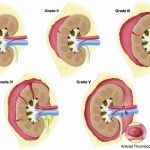It’s nice to have blood available early when major trauma patients need it. Unfortunately, it’s not very practical to have several units of O neg pulled for every trauma activation, let alone activate a full-blown massive transfusion protocol (MTP). Is there any way to predict which trauma patient might be in need of enough blood to trigger your MTP?
The Mayo Clinic presented a paper at the EAST Annual Meeting today that looked at several prediction systems and how they fared in predicting the need for massive transfusion. Two of the three systems (TASH – Trauma Associated Severe Hemorrhage, McLaughlin score) are too complicated for practical use. The Assessment of Blood Consumption tool is simple, and it turns out to be quite predictive.
Here’s how it works. Assess 1 point for each of the following:
- Heart rate > 120
- Systolic blood pressure < 90
- FAST positive
- Penetrating mechanism
A score >=2 is predictive of massive transfusion. In this small series, the sensitivity of ABC was 89% and the specificity was 85%. The overtriage rate was only 13%.
The investigators were satisfied enough with this tool that it is now being used to activate the massive transfusion protocol at the Mayo Clinic.
Bottom line: ABC is a simple, easy to use and accurate system for activating your massive transfusion protocol, with a low under- and over-triage rate.
Reference: Comparison of massive blood transfusion predictive models: ABC, easy as 1,2,3. Presented at the EAST 24th Annual Scientific Assembly, January 26, 2011, Session I Paper 4. Click here to view the abstract.


